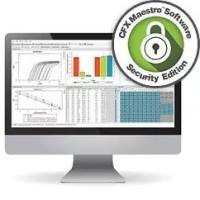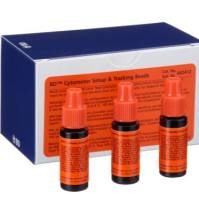Exploring Biological Networks with Cytoscape Software
互联网
- Abstract
- Table of Contents
- Figures
- Literature Cited
Abstract
Cytoscape is a free software package for visualizing, modeling, and analyzing molecular and genetic interaction networks. As a key feature, Cytoscape enables biologists to determine and analyze the interconnectivity of a list of genes or proteins. This unit explains how to use Cytoscape to load and navigate biological network information and view mRNA expression profiles and other functional genomics and proteomics data in the context of the network obtained for genes of interest. Additional analyses that can be performed with Cytoscape are also discussed. Curr. Protoc. Bioinform. 23:8.13.1?8.13.20. © 2008 by John Wiley & Sons, Inc.
Keywords: network visualization; network analysis; systems biology; protein interactions; biological network
Table of Contents
- Introduction
- Basic Protocol 1: Visualize a Network
- Support Protocol 1: Installing Cytoscape Locally
- Support Protocol 2: Obtain Yeast Network Data from Saccharomyces Genome Database (SGD)
- Support Protocol 3: Obtain Network Data Using the cPath Database
- Support Protocol 4: Obtain a Biological Pathway from the Reactome Database
- Support Protocol 5: Load an Existing Network Data File
- Alternate Protocol 1: Integrate Expression Data
- Guidelines for Understanding Results
- Commentary
- Literature Cited
- Figures
- Tables
Materials
Figures
-
Figure 8.13.1 Flowchart summarizing the protocols defined in this unit. View Image -
Figure 8.13.2 A few lines from the galFiltered.sif protein interaction network file included in the Cytoscape/sampleData directory. The first and last columns contain node IDs, while the middle column defines an edge type. View Image -
Figure 8.13.3 The basic Cytoscape user interface. View Image -
Figure 8.13.4 The funnel icon at the left of the figure opens the Filters tab in the Control Panel. Next to it is the Quick Find search box, and the Quick Find configuration icon is at the far right. View Image -
Figure 8.13.5 The Quick Find search box can filter numerical attributes by dragging the two triangles to define minimum and maximum values. All nodes or edges falling within this range will be selected. View Image -
Figure 8.13.6 The Select Attributes icon is found at the far left of the Data Panel (the rectangle with a grey horizontal stripe). When clicked, a list of attributes appears. These will be displayed in the Data Panel if they are checked. View Image -
Figure 8.13.7 The cPath Cytoscape plug‐in searches the MINT and IntAct databases to automatically import network data into Cytoscape. View Image -
Figure 8.13.8 A sample Cytoscape network created using the cPath plug‐in to search for p53 in Homo sapiens . The JGraph radial layout was applied. View Image -
Figure 8.13.9 The window that appears when importing an Excel or delimited text network file. View Image -
Figure 8.13.10 The first few lines of galExpData.mrna, a sample expression data file. The first row is a header row. The first column contains gene names, and the second has the common names for each gene, followed by expression level data from three experimental conditions. The first column is mapped to the node IDs in the network unless otherwise specified. View Image -
Figure 8.13.11 The first few lines of galExpData.pvals, an expression data file included in the Cytoscape/sampleData directory. The first row is a header row. The first column contains gene names, and the second has the common names for each gene. The next three columns contain expression level data from three experimental conditions. The last three columns contain the significance or p ‐values associated with each piece of experimental data. Note that the p ‐value columns must contain exactly the same headers in the same order as the data columns in order for Cytoscape to associate the p ‐values with the data. View Image -
Figure 8.13.12 An example color gradient created to map node color to the gal80RGexp condition in the galExpData.pvals sample file. View Image
Videos
Literature Cited
| Bader, G.D. and Hogue, C.W. 2003. An automated method for finding molecular complexes in large protein interaction networks. BMC Bioinformatics 4: 2 (http://www.biomedcentral.com/1471‐2105/4/2). | |
| Bader, G., Donaldson, I., Wolting, C., Ouellette, B., Pawson, T., and Hogue, C. 2001. BIND—The Biomolecular Interaction Network Database. Nucleic Acids Res. 29: 242‐245. | |
| Bader, G.D., Cary, M.P., and Sander, C. 2006. Pathguide: A pathway resource list. Nucleic Acids Res. 34: D504‐ D506. | |
| Cerami, E.G., Bader, G.D., Gross, B.E., and Sander, C. 2006. cPath: Open source software for collecting, storing, and querying biological pathways. BMC Bioinformatics 7: 497 (http://www.biomedcentral.com/1471‐2105/7/497). | |
| Christie, K.R., Weng, S., Balakrishnan, R., Costanzo, M.C., Dolinski, K., Dwight, S.S., Engel, S.R., Feierbach, B., Fisk, D.G., Hirschman, J.E., Hong, E.L., Issel‐Tarver, L., Nash, R., Sethuraman, A., Starr, B., Theesfeld, C.L., Andrada, R., Binkley, G., Dong, Q., Lane, C., Schroeder, M., Botstein, D., and Cherry, J.M. 2004. Saccharomyces Genome Database (SGD) provides tools to identify and analyze sequences from Saccharomyces cerevisiae and related sequences from other organisms. Nucleic Acids Res. 32: D311‐D314. | |
| de Lichtenberg, U., Jensen, L.J., Brunak, S., and Bork, P. 2005. Dynamic complex formation during the yeast cell cycle. Science 307: 724‐727. | |
| Garcia, O., Saveanu, C., Cline, M., Fromont‐Racine, M., Jacquier, A., Schwikowski, B., and Aittokallio, T. 2007. GOlorize: A Cytoscape plug‐in for network visualization with Gene Ontology‐based layout and coloring. Bioinformatics 23: 394‐396. | |
| Hermjakob, H., Montecchi‐Palazzi, L., Lewington, C., Mudali, S., Kerrien, S., Orchard, S., Vingron, M., Roechert, B., Roepstorff, P., Valencia, A., Margalit, H., Armstrong, J., Bairoch, A., Cesareni, G., Sherman, D., and Apweiler, R. 2004. IntAct: An open source molecular interaction database. Nucleic Acids Res. 32: D452‐D455. | |
| Ideker, T., Ozier, O., Schwikowski, B., and Siegel, A.F. 2002. Discovering regulatory and signalling circuits in molecular interaction networks. Bioinformatics 18: S233‐S240. | |
| Joshi‐Tope, G., Gillespie, M., Vastrik, I., D'Eustachio, P., Schmidt, E., de Bono, B., Jassal, B., Gopinath, G.R., Wu, G.R., Matthews, L., Lewis, S., Birney, E., and Stein, L. 2005. Reactome: A knowledgebase of biological pathways. Nucleic Acids Res. 33: D428‐D432. | |
| Krummenacker, M., Paley, S., Mueller, L., Yan, T., and Karp, P.D. 2005. Querying and computing with BioCyc databases. Bioinformatics 21: 3454‐3455. | |
| Maere, S., Heymans, K., and Kuiper, M. 2005. BiNGO: A Cytoscape plug‐in to assess overrepresentation of gene ontology categories in biological networks. Bioinformatics 21: 3448‐3449. | |
| Morris, J.H., Huang, C.C., Babbitt, P.C., and Ferrin, T.E. 2007. structureViz: Linking Cytoscape and UCSF Chimera. Bioinformatics 23: 2345‐2347. | |
| Peri, S., Navarro, J.D., Kristiansen, T.Z., Amanchy, R., Surendranath, V., Muthusamy, B., Gandhi, T.K., Chandrika, K.N., Deshpande, N., Suresh, S., et al. 2004. Human protein reference database as a discovery resource for proteomics. Nucleic Acids Res. 32: D497‐D501. | |
| Shannon, P., Markiel, A., Ozier, O., Baliga, N.S., Wang, J.T., Ramage, D., Amin, N., Schwikowski, B., and Ideker, T. 2003. Cytoscape: A software environment for integrated models of biomolecular interaction networks. Genome Res. 13: 2498‐2504. | |
| Stuart, J.M., Segal, E., Koller, D., and Kim, S.K. 2003. A gene‐coexpression network for global discovery of conserved genetic modules. Science 302: 249‐255. | |
| Vailaya, A., Bluvas, P., Kincaid, R., Kuchinsky, A., Creech, M., and Adler, A. 2005. An architecture for biological information extraction and representation. Bioinformatics 21: 430‐438. | |
| Wixon, J. and Kell, D. 2000. The Kyoto encyclopedia of genes and genomes—KEGG. Yeast 17: 48‐55. | |
| Xenarios, I., Salwínski, L., Duan, X., Higney, P., Kim, S.M., and Eisenberg, D. 2002. DIP, the Database of Interacting Proteins: A research tool for studying cellular networks of protein interactions. Nucleic Acids Res. 30: 303‐305. | |
| Yu, H., Kim, P.M., Sprecher, E., Trifonov, V., and Gerstein, M. 2007. The importance of bottlenecks in protein networks: Correlation with gene essentiality and expression dynamics. PLoS Comput. Biol. 3: e59 (http://www.ploscompbiol.org/article/info%3Adoi%2F10.1371%2Fjournal.pcbi.0030059). | |
| Zanzoni, A., Montecchi‐Palazzi, L., Quondam, M., Ausiello, G., Helmer‐Citterich, M., and Cesareni, G. 2002. MINT: A Molecular INTeraction database. FEBS Lett. 513: 135‐140. | |
| Key References | |
| Bader et al., 2006. See above. | |
| Pathguide provides an extensive list of electronic pathway resources, both public and private, along with references and URLs for each. | |
| Shannon et al., 2003. See above. | |
| This article provides further background on Cytoscape, and the questions that it was first developed to address. | |
| Internet Resources | |
| http://www.cytoscape.org | |
| The home page of the Cytoscape project contains download links, the latest manual, plug‐ins, online tutorials, and links to the Cytoscape discussion forums and project development wiki. | |
| http://java.sun.com | |
| This is the central Internet resource for Sun Java, with download links, documentation, and software development packages. Java must be installed for Cytoscape to run. Most computers already have Java installed. | |
| http://www.yeastgenome.org | |
| The Saccharomyces Genome Database, available at this site, contains a wealth of yeast genomic and experimental data, tools, and resources for the study of yeast; in particular, the SGD maintains a large database of yeast interaction data, and provides this data in formats including Cytoscape SIF format. | |
| http://www.reactome.org | |
| Reactome provides curated pathway data for many of the key pathways in humans, and over twenty other organisms. | |
| http://llama.med.harvard.edu/cgi/synergizer/translate | |
| The Synergizer offers an effective, usable solution to one of the most frequent and frustrating problems in computational molecular biology: identifier mapping. |







